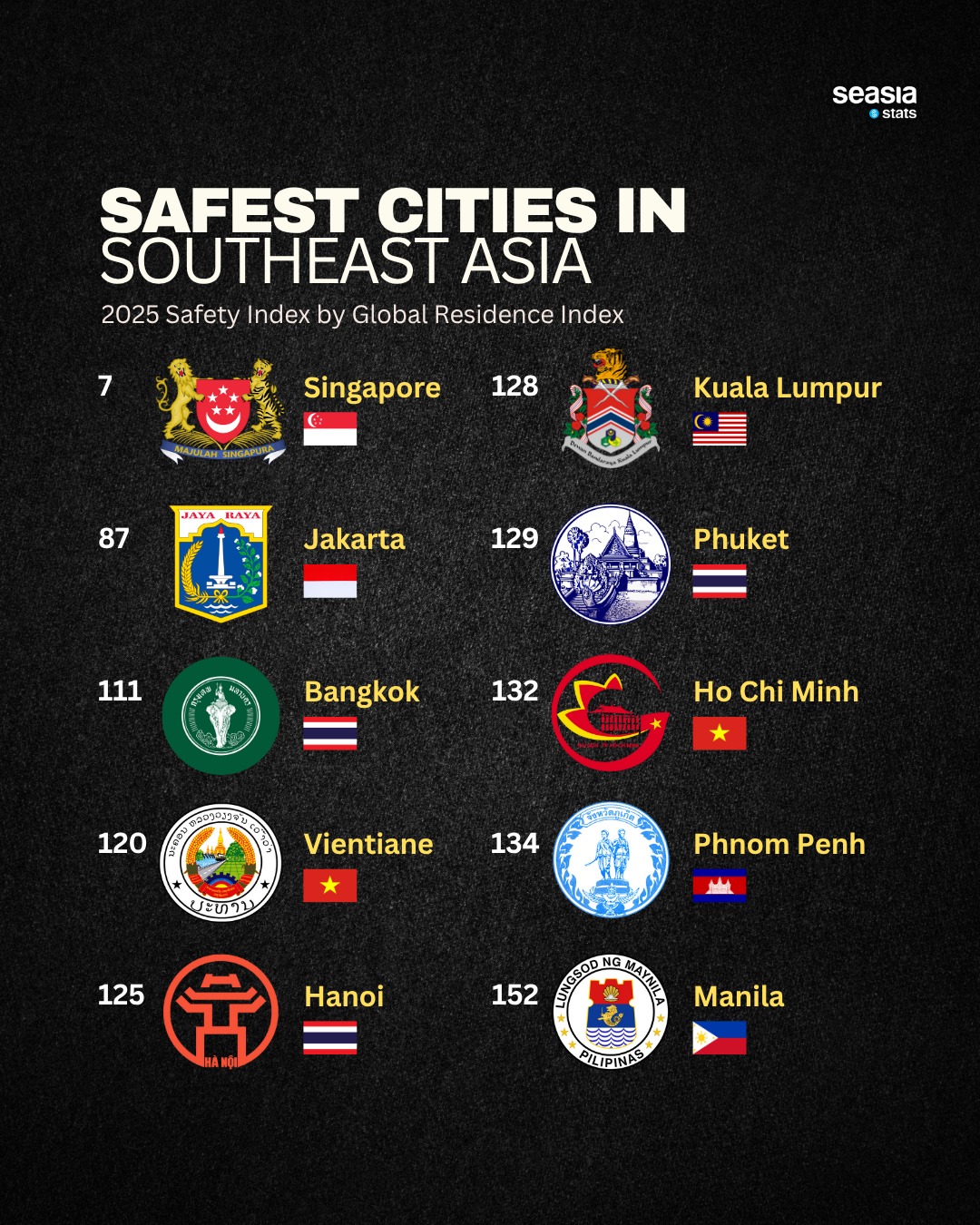When it comes to urban safety, Southeast Asia is a region of sharp contrasts. The 2025 Safety Index by Global Residence Index paints a telling picture, showing how some of the region’s cities are global examples of order, while others continue to grapple with complex urban challenges.
The index, which evaluates cities worldwide based on crime rates, policing, safety infrastructure, and public perception, places Southeast Asian cities across a wide spectrum.
From Singapore at the top to Manila at the bottom, the diversity in safety standards reflects broader issues of governance, development, and urban management.

Singapore: Consistently Secure
Ranked 7th in the world, Singapore maintains its status as one of the safest cities globally. With its tough laws, highly efficient police force, and tech-driven public surveillance system, safety in Singapore is not just a feature, it’s a fundamental part of everyday life.
According to recent tourism data, Singapore received over 7 million international visitors in the first five months of 2025 alone.
Tourists from China, Indonesia, and India continue to drive demand, a testament to the city’s appeal not just as a clean and modern destination, but also as a reliably safe one.
Middle of the Pack: Progress Meets Pressure
Jakarta comes in at rank 87. While that may not sound impressive, it reflects a gradual improvement in security and urban governance.
Recent efforts to reduce traffic congestion, digitalize policing, and invest in community safety are starting to show results.
Bangkok (111) and Kuala Lumpur (128), both major business and tourism centers, still face challenges ranging from petty crime in crowded markets to scams targeting travelers. Public trust in law enforcement remains mixed, and urban sprawl often makes consistent policing difficult.
Tourist Favorites, Safety Struggles
Phuket (129) and Ho Chi Minh City (132) are beloved by tourists, but that doesn’t always translate into safety. As holiday destinations, these cities attract large crowds, creating pressure on local infrastructure.
Issues like inadequate street lighting, underfunded law enforcement, and limited emergency services can make visitors and locals alike feel exposed.
Phnom Penh (134), Cambodia’s capital, shares similar concerns. While the city has seen significant growth and investment, its safety infrastructure is still catching up. Public transportation safety and nighttime visibility remain weak spots.
Hanoi and Vientiane: Quiet but Vulnerable
Hanoi (125) and Vientiane (120) present a different type of challenge. They are quieter, less chaotic cities, often perceived as relatively calm.
Yet, their lower safety rankings suggest that while crime may be less visible, systemic issues, such as limited urban planning or emergency readiness, still hold them back.
Manila: At the Bottom of the List
At rank 152, Manila is Southeast Asia’s lowest-rated city in terms of safety. Issues such as traffic-related accidents, socioeconomic disparity, and crime perception contribute heavily to its placement.
While efforts are being made to improve police responsiveness and digital surveillance, public confidence remains low.
For a city that serves as the political and cultural heart of the Philippines, Manila’s position is a wake-up call. Safety is not only about numbers; it’s about the everyday sense of comfort and trust people feel in their surroundings.
Why Safety Rankings Matter
The 2025 Safety Index isn’t just a chart for statisticians, it’s a reflection of how cities are lived in. A safe city attracts investors, tourists, and new residents. It empowers communities and encourages public engagement. Conversely, perceived insecurity can hinder economic potential and erode public trust.
As Southeast Asia grows in global influence, safety will remain a defining factor of urban competitiveness. Cities like Singapore prove what’s possible with consistent policy and innovation. Others, like Manila or Phnom Penh, highlight the urgent need for inclusive urban reform.
Ultimately, safety in Southeast Asia is not a fixed attribute, it’s a dynamic outcome shaped by decisions, investments, and the will to build cities that protect, uplift, and welcome all.


















